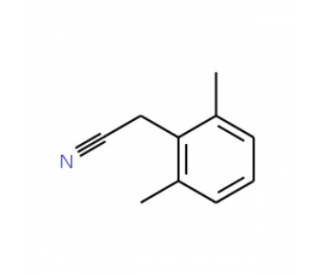详细说明
Purity
>95%, by SDS-PAGE with silver staining.
Endotoxin Level
<0.10 EU per 1 μg of the protein by the LAL method.
Activity
Measured by its ability to induce IFN-gamma secretion by mouse splenocytes. The ED 50 for this effect is 0.4-2 μg/mL.
Source
Human embryonic kidney cell, HEK293-derived Trp49-Leu174 (Gly136Asp), with an N-terminal HA tag
Accession #
N-terminal Sequence
AnalysisTyr
Predicted Molecular Mass
16 kDa
SDS-PAGE
19-30 kDa, reducing conditions
8435-CL |
| |
Formulation Lyophilized from a 0.2 μm filtered solution in PBS. | ||
Reconstitution Reconstitute at 100 μg/mL in PBS. | ||
Shipping The product is shipped at ambient temperature. Upon receipt, store it immediately at the temperature recommended below. | ||
Stability & Storage: Use a manual defrost freezer and avoid repeated freeze-thaw cycles.
|
Data Images
| Recombinant Human CLEC‑2A (Catalog # 8435-CL) induces IFN-gamma secretion by mouse splenocytes. The ED50 for this effect is 0.4-2 μg/mL. |
SDS-PAGE
| 1 μg/lane of Recombinant Human CLEC-2A was resolved with SDS-PAGE under reducing (R) and non-reducing (NR) conditions and visualized by silver staining, showing R bands at 22.3, 28.4 kDa and NR bands at 21.8, 29.1 kDa. |
Background: CLEC-2A
CLEC-2A, also called keratinocyte-associated C-type lectin (KACL), is a type 2 transmembrane glycoprotein member of the C-type lectin-like receptor (CTLR) family. CLEC-A2 is part of the subgroup of CLEC-2 proteins that also includes CLEC-2B/AICL, CLEC-2D/LLT, and CD69/CLEC-2C, all of which are encoded by the natural killer gene complex (NKC) (1, 2). CLEC-2A is composed of a 126 amino acid (aa) carboxy terminal extracellular C-type lectin-like domain (CTLD), a 21 aa transmembrane domain and a 27 aa amino terminal cytoplasmic domain. The CTLD folds into a compact structure with two alpha -helices and two antiparallel beta -sheets stabilized by three conserved intramolecular disulfide bonds (3). CLEC-2 proteins act as ligands and interact with NKRP1 receptors which also are CTLR and encoded by the NKC. The crystal structure of the complex shows CLEC-2A as a non-disulfide linked homodimer that symmetrically binds two NKp65 monomers. Interaction occurs via the membrane-distal surface of the CTLD in a head-to-head orientation (4). Five key residues for CLEC-2A binding to NKp65 are conserved or conservatively substituted among CLEC-2 proteins. Thus, the CLEC-2A-NKp65 interaction is proposed as a model for all NKRP1-CLEC-2 complexes (4). Orthologs for NKp65 and CLEC-2A are present in chimpanzee, rhesus macaque and cow but have not been described in rodents (5). Whereas CLEC-2B/AICL, CLEC-2D/LLT, and CD69/CLEC-2C are generally expressed on hematopoietic cells, CLEC-2A expression is restricted to keratinocytes. In vitro, the NKp65-CLEC-2A interaction will trigger natural killer cell cytotoxicity and the release of proinflammatory cytokines (6). Thus, CLEC-2A facilitates NKp65-mediated immunosurveillance of keratinocytes (6).
References:
Spreu, J. et al. (2007) Immunogenetics 59:903.
Yokohama, W.M. et al. (2003) Nat.Rev.Immunol. 3:304.
Zelensky, A.N. et al. (2005) FEBS J. 272:6179.
Li, Y. et al. (2013) Proc. Natl. Acad. Sci. USA 110:11505.
Vogler, I. et al. (2011) J. Innate Immun. 3:227.
Spreu, J. et al. (2010) Proc. Natl. Acad. Sci. USA 107:5100.
Long Name:
C-type Lectin Domain Family 2, Member A
Entrez Gene IDs:
387836 (Human)
Alternate Names:
CLEC2A C-type lectin domain family 2, member A ; CLEC2A; CLEC-2A; KACL; PILAR; UNQ5792











 粤公网安备44196802000105号
粤公网安备44196802000105号